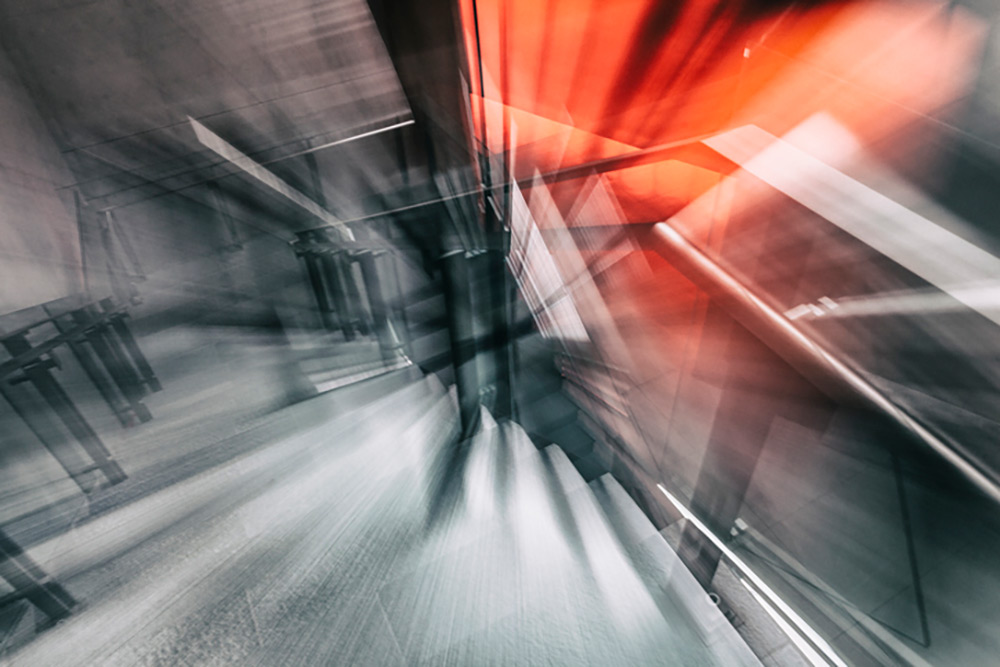
iStock
By Mary Carpenter
ON THE MORNING 60-something development professional C.M. was heading from Philadelphia to Boston for a child’s high school graduation, she woke with a sensation of spinning inside her head. She recognized it from prior experiences: vertigo. If she kept her head propped on pillows and remained still, it wasn’t too bad, but cars and airplanes, standing up and sitting down, would be unbearable.
The spinning that defines vertigo—that the head or the surrounding environment is spinning—is “the perception of motion when no movement is present, or the abnormal perception of motion in response to movement.” Lying on the back for a long time, such as in a dentist chair, can be a trigger. Vertigo is unpleasant and disorienting—and dangerous if you try to drive or climb a ladder. It’s not the same as dizziness—which usually lasts just seconds, while vertigo can persist—or fear of heights, although dizziness can accompany both vertigo and acrophobia.
The movement can also feel like floating or rocking, “intense [as] if you’re on a boat and the boat is rocking back and forth,” Connecticut otolaryngologist Francisco Benjamin Wycherly told the American Medical Association news site. The most common kind of vertigo is Benign Positional Vertigo (BPV)—or BPPV, with the added P for paroxysmal, meaning sudden recurrence or intensification of symptoms, such as spasms.
BPV is usually idiopathic, meaning without known cause—although it occurs more often in those over age 65 and twice as often in women as men; and may be linked to osteoporosis and family history. Vertigo can also start with a bacterial infection or Meniere’s disease—causing buildup of fluid in the inner ear; or it can begin in the brain with migraine or following head injury. Persistent vertigo can also be the result—or the cause—of mental health issues, such as depression and anxiety.
Sudden severe vertigo that makes it hard to stand or walk is one reason to seek emergency treatment. Also, hearing loss that accompanies the vertigo can indicate that infection is inflaming the inner ear, called labyrinthitis or sudden sensorineural hearing loss—and hearing may not recover without treatment, University of Iowa neurologist and otolaryngologist Deema Fattal told the AMA site. Another reason to seek emergency treatment: when neurological symptoms—clumsiness, hiccups, swallowing problems—accompany sudden onset vertigo.
The “head impulse test” for vertigo involves trying to hold the gaze on an object (like the doctor’s nose) while moving the head quickly from side to side. If the gaze shifts when moving the head to one side, that can help indicate which ear is affected—vertigo rarely infects both ears. Indicative of vertigo and thus an aid in diagnosis are unusual eye movements called nystagmus that occur with rapid movement: from sitting to lying down, or with the additional rapid movement of the head to one side and then down (over the side of the bed or other support) below the level of the body.
BPV arises from a disturbance in crystals in the ear that monitor the body’s movement. Displacement of the crystals—composed of calcium carbonate and called otolith crystals or otoconia, also debris and “ear rocks”— from the inner ear into the semicircular canals can alter sensitivity to positional changes. To break up the displaced crystals, the series of movements is similar to that used to diagnose BPV, called the Epley maneuver or canalith repositioning. The simple movement requires holding each position for 30 seconds after symptoms cease —but should be recommended and demonstrated at least initially by a physician.
Vertigo can disappear without treatment when the cause, such as a viral infection, clears. Or the body can adapt by relying more on the other senses for balance—either naturally or with the help of vestibular rehabilitation. Most cases of BPV resolve in a day or two, 80% end within a week; and 95% of patients recover fully.
Depending on the cause of vertigo, antihistamines or medications for seasickness—such as generic meclizine, called Antivert or Bonine—can help with dizziness as well as nausea. And ginger as an all-around nausea-suppressant is on the home remedy list, along with ginkgo biloba, also almonds (perhaps because of their high Vitamin A, B and E content). And because even mild dehydration can trigger BPV, drinking extra water can help prevent attacks. On the other hand, decreasing fluids via diuretics— and reducing salt —can help reduce the inflammation that accompanies vestibular vertigo and Meniere’s disease.
BPPV can recur, most commonly in people who sleep on the affected side. The best antidote can be adding a pillow under the head and/or using pillows or other props to prevent turning onto that side. Chronic sufferers should move their bodies, and their heads in particular, slowly when changing position, especially when standing or reaching overhead. But no one should just “live with” vertigo, according to Wyncherly, who described the “very sad” situation of a patient who lived 20 years with undiagnosed vertigo. He recommends starting with a primary care physician, or an ear. nose and throat doctor, who can make decisions and sometimes referrals for diagnosis and treatment.
I have not experienced vertigo but am very sympathetic to those affected as I am a chronic sufferer of all kinds of motion sickness—in boats and cars, watching 3-D films and the one time I tried a video game: just writing about vertigo can make me feel slightly woozy. And I became aware of widely varying approaches to vertigo treatment when a friend had extreme dizziness, diagnosed as Meniere’s disease and considered permanent—until she found physicians who helped rid of her symptoms entirely.
—Mary Carpenter regularly reports on topical subjects in health and medicine.
